My winter holidays were extended by another day as St. John’s was covered in a glorious (though massive) blanket of snow. I was grateful, it gave me one more day to prepare myself for “schedules” and not being able to nap when I felt like it. it also gave me more time to read, reflect and write. I have spent the past few weeks consumed by Journeys: Reconceptualizing Early Childhood Practices through Pedagogical Narration By Veronica Pacini-Ketchabow, Filke Nxumalo, Laurie Kocher, Enid Elliot, and Alejandra Sanchez.
The Image [of the child] that educators hold is not a fixed essence, but is always shifting, always in the process of becoming – and it does so through the materials and discursive effects that educators materialize in the moments of pedagogical encounters (p.53)… They [the educators,] are part of the image- and of an ongoing articulation of the image of children in the moments of practice (p.54).
This quote struck me, and I returned to it this week as I “tidied” the environment after our Saturday group were picked up. As I stood overlooking the space that had been scattered with children just a few moments before, I thought back to the morning when this fresh layer of snow was mostly smooth and untouched, except for the prints from my snowshoes and a rabbit. Now the area was rugged looking, foot prints, deep impressions, trenches dug, snow stacked, areas slick and smooth from belly sliding.
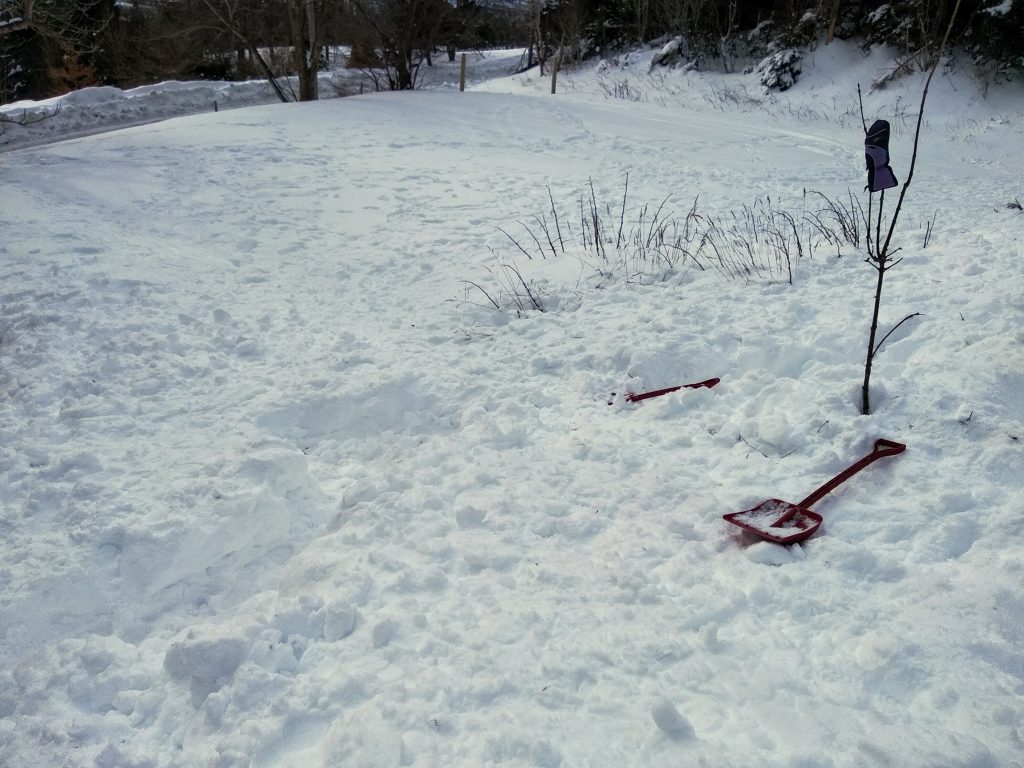
Even after the materials had been brought back inside and place in their “place,” the traces of the children (and educators) play were left behind in the snow. While materials left behind were minimal – a few shovels, metal bowls and scoops, and a pair of mittens. The traces left behind in the snow were a powerful mapping of the mornings play.
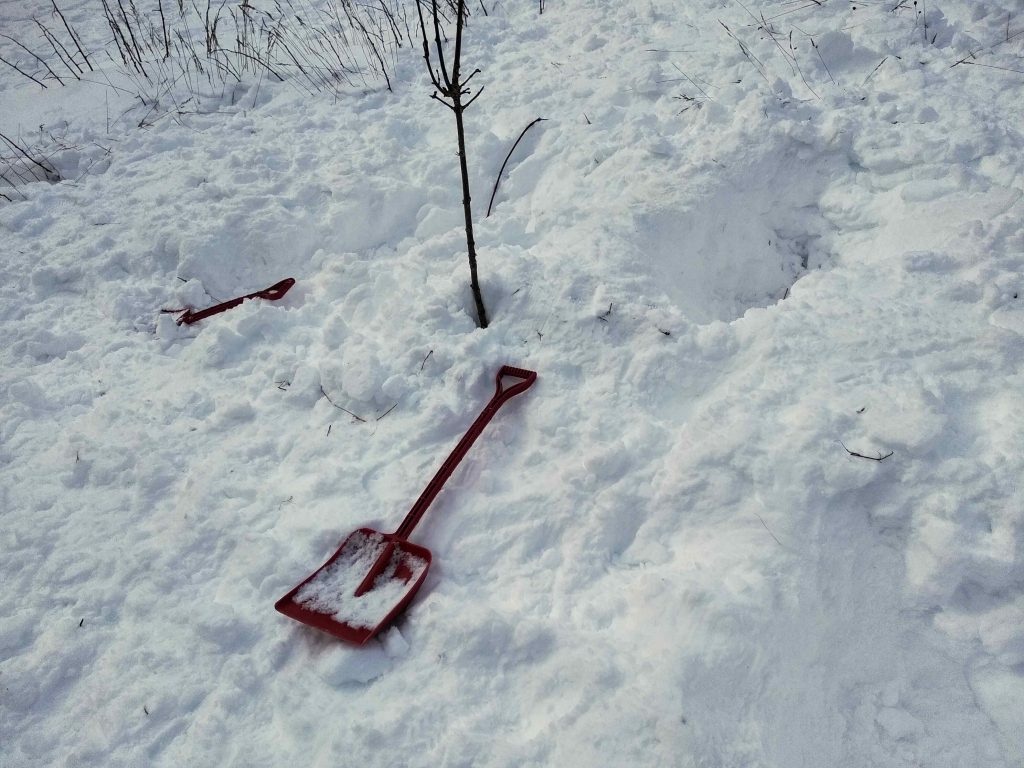
It was somewhat of an epiphany. When I first started to think about creating this blog I started, I imagined posting photos filled with loose parts, puddles of paint, muddy tools and toys – materials arranged like a piece of abstract art.
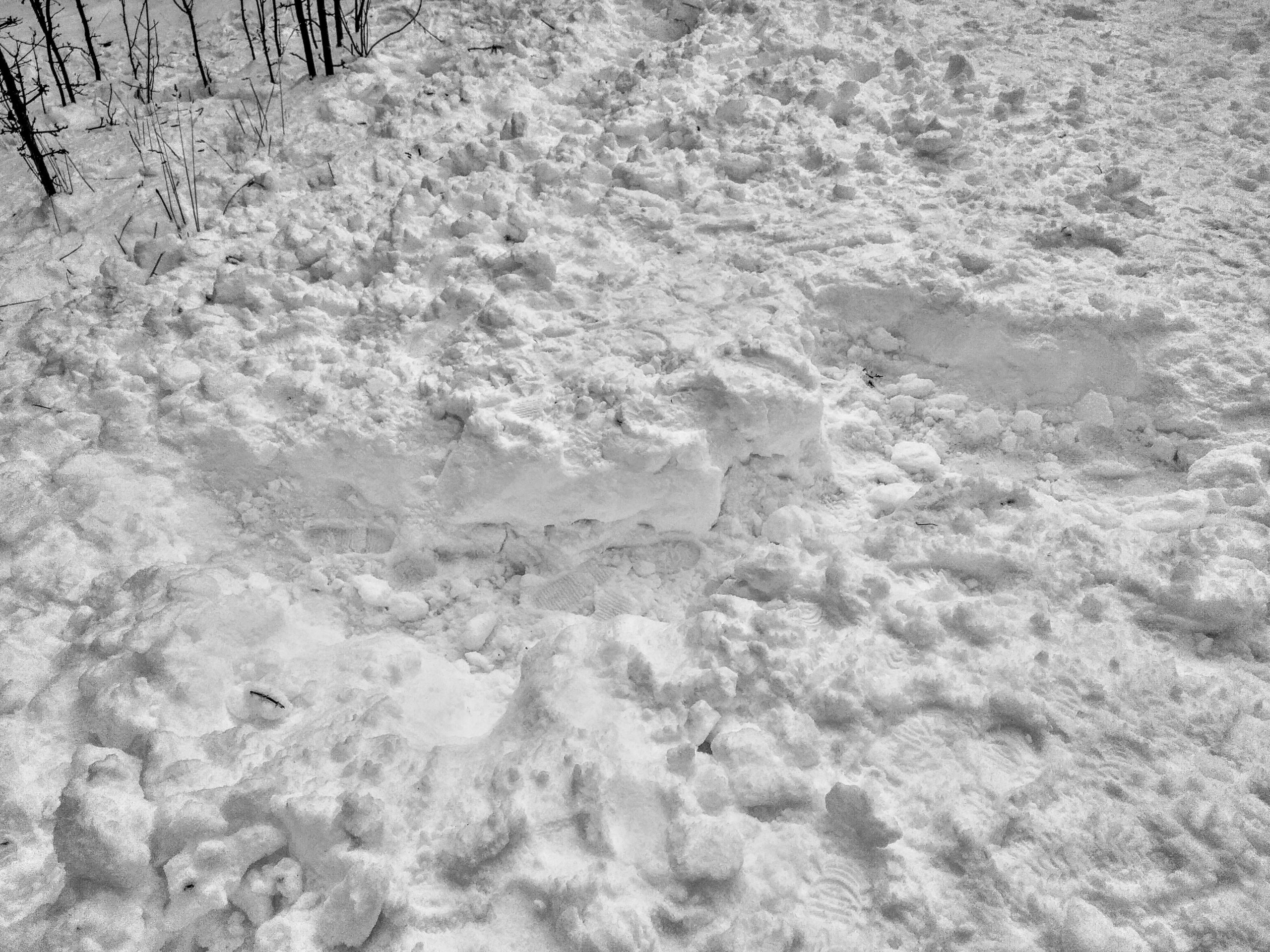
“Traces of Play in the Snow” – Edited to emphasize the transformation of the snow
Sometimes play is minimal, with hardly any trace at all, and yet it is just as rich, just as imaginative, just as full of joy, collaboration, problem solving, and adventure as the messy and material rich play.
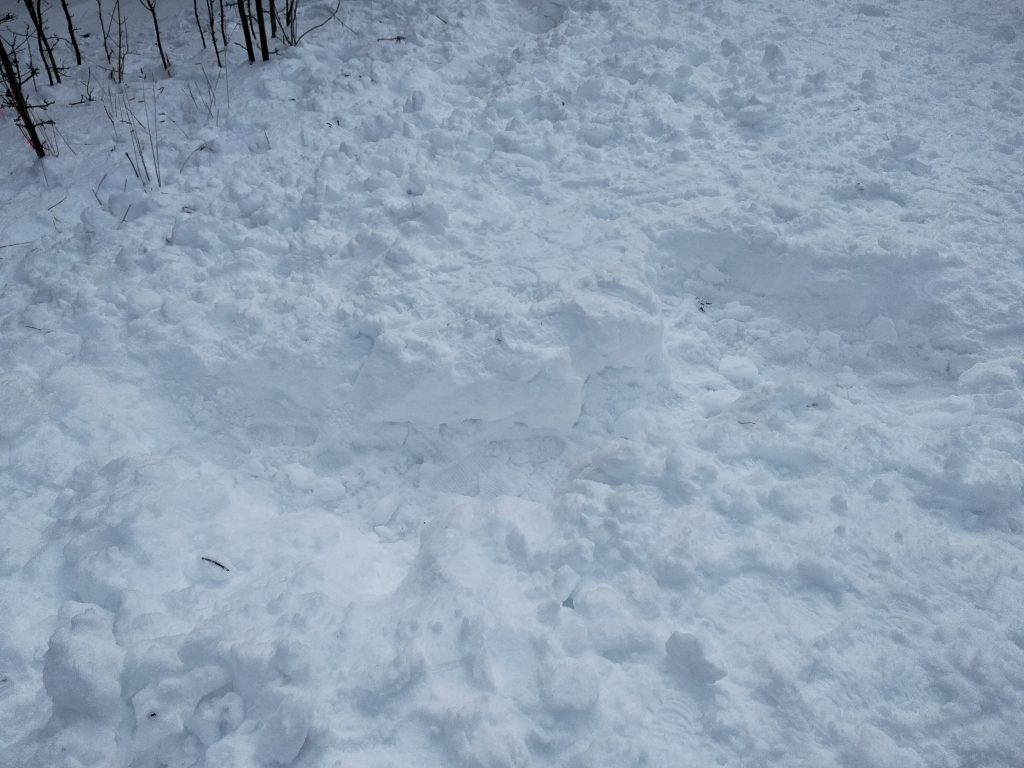
“Traces of Play in the Snow” – Original
Something magical, special, and important happened here^.
References
Pacini-Ketchabaw, V., Nxumalo, F., 1971, Kocher, L., 1959, Elliot, E., 1947, & Sanchez, A., 1967. (2015). Journeys: Reconceptualizing early childhood practices through pedagogical narration. North York, Ontario: University of Toronto Press
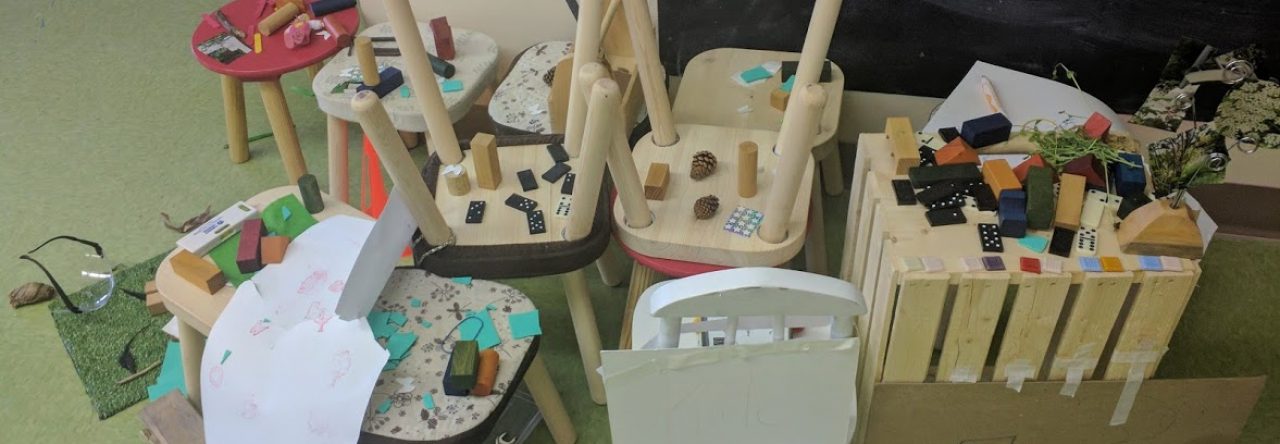
Leave a Reply